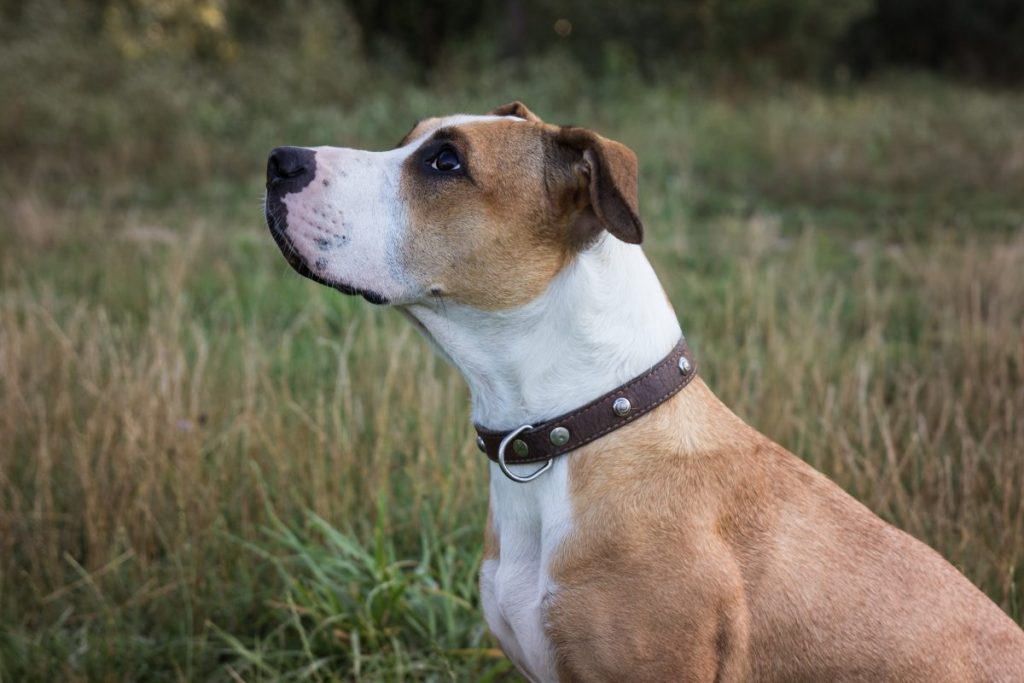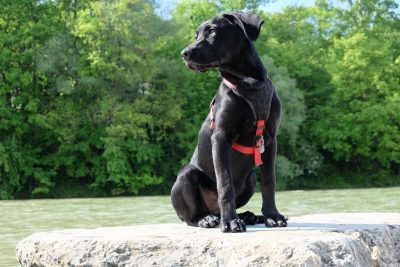The “sit” command is one of the first, and easiest skills to teach your dog. Not only is this the foundation for many more complicated tricks, but this command will also allow you to have more control over your dog.
With this command, the sooner you teach your dog, the better. Once you have taught your dog to sit, you will be able to have more control over his behavior. You can use this command to calm your dog down when he is over-excited, to re-direct his attention, ensure your dog’s safety, or to simply just sit for a treat. If your dog gets outside by mistake, you can utilize this command to have your dog sit to avoid him getting hurt by running into the street!
What you will need:
- A location that is familiar to your dog and free from distractions
- Rewards: small treats, a toy, or a clicker if you are training with that method
- Patience!
Teaching Your Dog to Sit
- Bring your dog to a quiet spot where he can focus without distraction.
- Hold a treat above his nose until he makes eye-contact with it.
- Begin to move the treat upward, allowing his head to follow.
- As his head follows your movement, his rear will lower to the ground.
- The instant your dog’s rear touches the ground, release the treat and immediately praise him!
- Repeat multiple times.
Once your dog has repeated and mastered these steps multiple times, you will begin to introduce the phrase “sit” before he performs the action. As you practice this with your dog, you will eventually perform all six steps listed above without a treat in your hand. It is important to hold your hand as you originally did with the treat. This will now become the hand signal you can give for your dog to perform the “sit” command.
After mastering the “sit” command, you should make it more challenging for him! You can begin with having your dog stay in the “sit” position for longer periods of time. Once he can remain in this position for a longer time, you can begin to move into more complicated commands, such as “stay.”
To do this, ask your dog to “sit,” and once his rear is on the ground move a foot away from him. Without allowing him to release from the “sit” position. The commands “sit” and “stay” are often paired together, and are two of the most important commands for your dog to master to have more control of his behavior.
Rewarding with Positive Reinforcement
It is important to remember only to use positive reinforcement when training your dog. Training is easiest when you use small treats and lavish praise as a reward. When beginning to train your dog, you will reward him every single time he completes the “sit” command and has his rear on the floor.
Once your dog has mastered the “sit” command, you will change to rewarding with a treat every other time he has completed the command. As time goes by and your dog is successfully sitting on command, begin to phase out giving a reward to only now and then.
Keep Training Sessions Short
Remember to keep training time short, especially if you are teaching your puppy how to sit. Dogs are easily distracted by their environment and will get bored quickly. You can avoid this by keeping training sessions at a maximum of ten minutes, spread out throughout the day.
While it is important to limit the length of time in training sessions, you can reinforce the behavior and practice throughout the day in normal activities. Incorporate the “sit” command into mealtime by only giving your dog his food once he has sat down.
When guests come to the front door request that your dog sits before opening the door. You can also use the sit command before you attach his leash.
Be Patient
While “sit” is one of the easier commands to teach, do not expect your dog to learn it overnight. You need to stay consistent and practice with your dog, so he begins to reinforce the behavior with the command. Remember to stay patient with your dog while he is learning. The time it takes to train him to “sit” will be well worth it!






